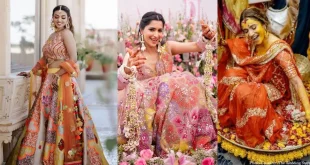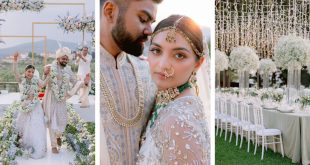The typical and traditional Bengali weddings have a long list of customs and rituals that are followed religiously by the bride, groom and both their families. Although, the rituals vary a little from region to region, yet on the whole, they are similar throughout the Bengali community. There are customs to be followed before, during and after the wedding, hence, the wedding ceremonies run into many days.
The matrimonial customs begin with the tradition of ‘Paaka Katha’, when the wedding is finalised and fixed by parents and close relatives of both sides.
Before the Wedding
Ashirbaad Ceremony: This is the Bengali style engagement ceremony wherein the groom’s parents, along with the groom himself, visit the bride-to-be, and shower the couple with husked rice, accompanied by trefoil. Gold is also given to the couple as a custom.
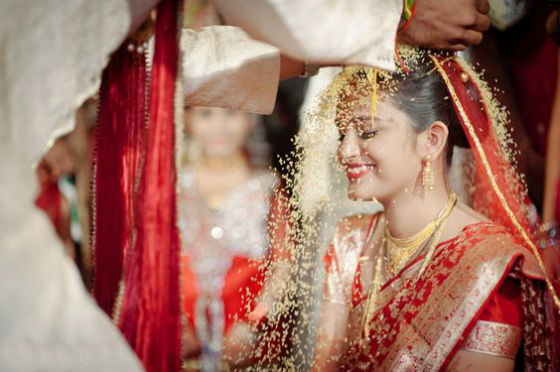
Gaye Holud: This is the auspicious turmeric-ritual in which the bride as well as the groom are smeared with turmeric paste in their respective homes, by the elder ladies of their families, heralding the lively wedding preparations.
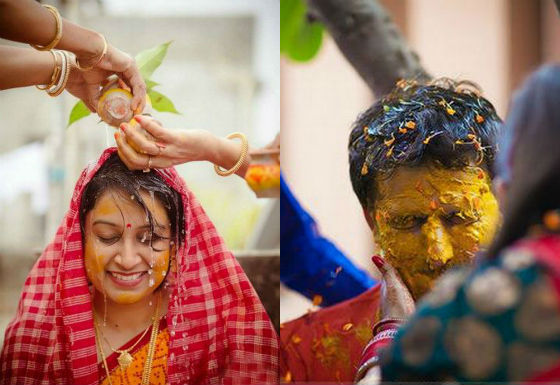
Dodhi Mongol: The ritual that is performed on the day of the wedding, involves any 7 married ladies of the bride’s side who put the quintessential Bengali red and white bangles around the wrist of the bride-to-be, preparing her for the main event.
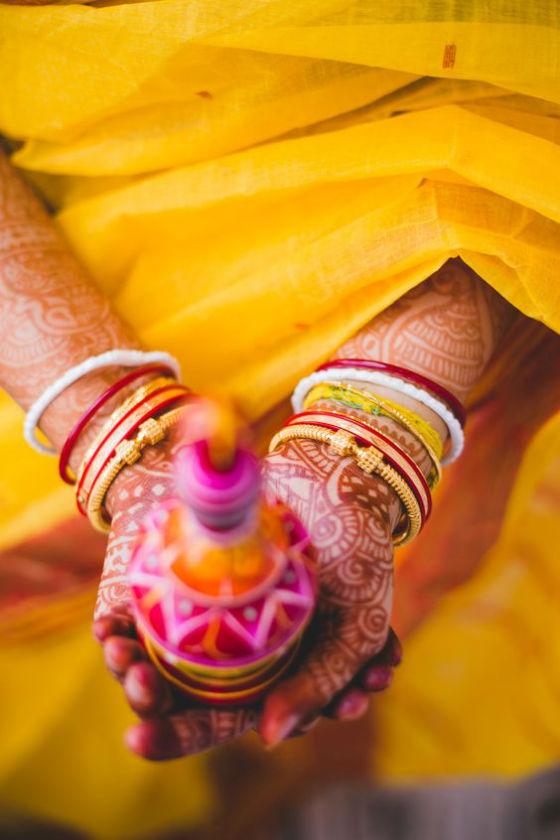
On the Wedding Day
Bor Boron: Once the ‘BoriJatri’– the wedding procession, arrives at the venue, amidst cheer and fervour, the bride’s mother offers a special welcome to the groom and the entire procession, with the traditional lamp, husked rice etc.
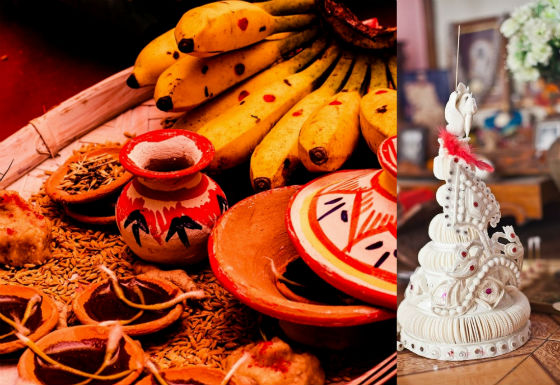
PottoBastra: The groom is ushered to the ‘chadnatolla’, the altar at the Mandapa, and is handed new clothes by the bride’s family, setting the stage for the bride to enter.
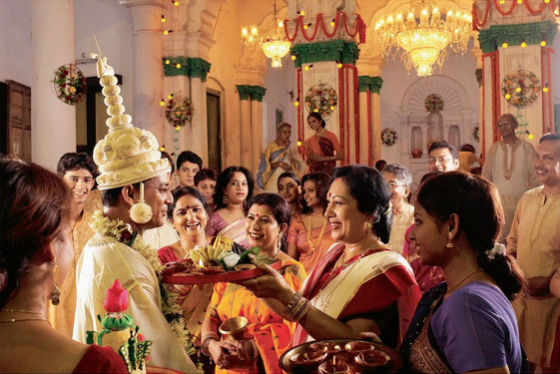
SaatPaak: The bride is escorted to the Mandapa, raised on a stool known as ‘Pidi’, that’s held by her brothers; the doting brothers make the bride revolve around the groom 7 times, with the bride holding ‘Paan’ leaves before her face. The couple is then made to peek through the leaves and exchange their first glance, in elation and shyness alike. The ritual is called ‘Shubho Drishti’.

Following the garland exchanging ‘Mala Badal’ ritual, ‘Sampradan’ is performed by an elder, male family member of the bride’s side, who offers her hand into the hands of the groom, amidst the holy chants and prayers during the ‘Yagna’; signifying that the bride now belongs to the groom forever.
Saptapadi and Anjali: The couple is made to take rounds of the holy fire seven times, which marks their pious unison. They also make offerings of puffed rice to the sacred Yagna-fire together, as part of the ceremony.
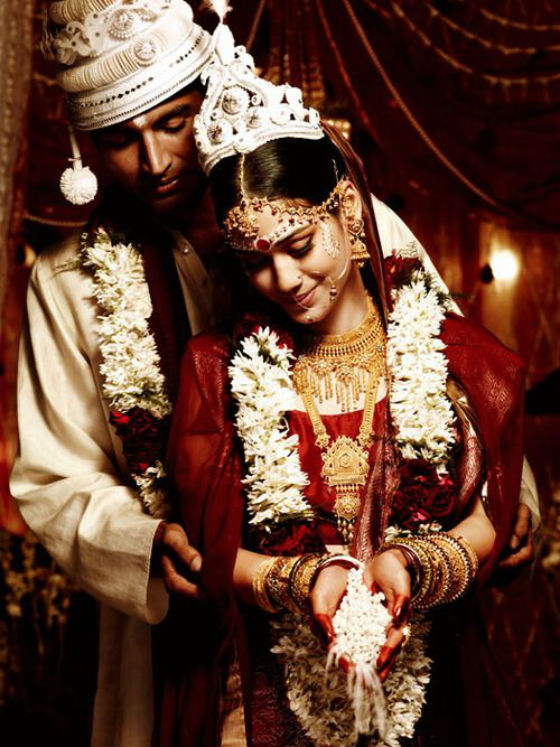
SindoorDaan, Ghoomta: One of the most significant customs, the groom smears sindoor (vermillion) to the forehead of his bride, following which, the bride puts onto her head, the new saari given to her by the groom.
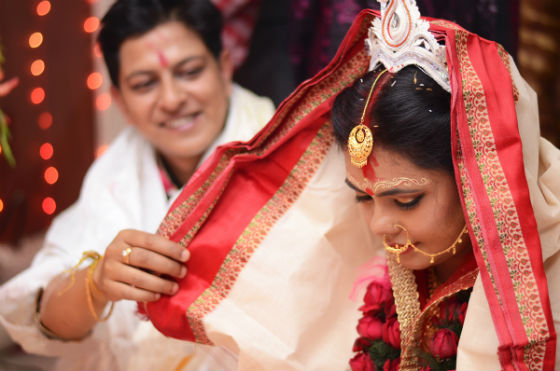
After the Wedding
Bidaaye and Kaal-Ratri: After the wedding is solemnized, and the bride departs from her maternal home to her husband’s house, with the blessings of all elders, the newly-wed couple is made to spend the night apart; a ritual that the newlyweds may not like but still have to abide by.
BouBhaat, Bodhu Boron: The new bride prepares meal for the very first time after the wedding, for her new family. She is endowed with gifts by the elders as blessings.
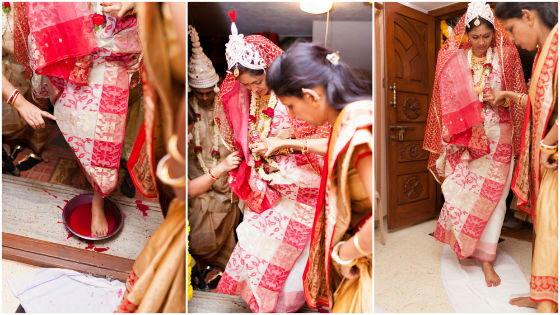
Looking for a place for wedding ? Browse and book best-suited wedding venues from VenueLook.com
 Event, Party & Wedding Planning Tips & Ideas for Celebrations Party and Event Planning Tips, Resources and Venues
Event, Party & Wedding Planning Tips & Ideas for Celebrations Party and Event Planning Tips, Resources and Venues


